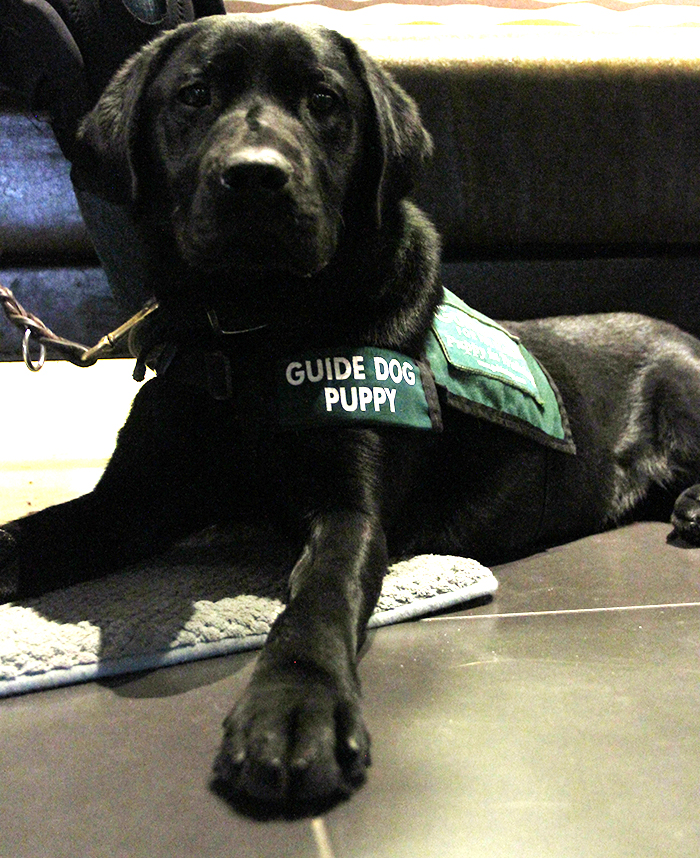Yet another reason why we really don’t deserve dogs
RACHEL SUN | The Daily Evergreen
Jessup, a 10-month-old service dog, is a part of the Guiding Paws training program, where puppies are trained to be guide dogs for the blind, or to be companion dogs.
April 13, 2017
As a 10-month-old lab in the Guiding Paws of the Palouse club, Jessup has a lot of training ahead of him if he hopes to graduate as an expert service dog.
Ever since he was born in a breeding colony in San Rafael, California, it was inevitable that Jessup was going to go through the in-depth preparation to become a service dog for Guide Dogs for the Blind (GDB), the organization that Guiding Paws of the Palouse raises puppies for.
The Guiding Paws club was established in April 2014 by a student who had been involved with GDB in the past and wanted to see it integrated into the Palouse community. The club is responsible for raising, training and socializing puppies from eight to 12 weeks of age until they are 10 – 13 months old.
Jessup’s puppy raiser is Caitlin Smith, a first-year vet student and sitter coordinator for the Guiding Paws club.
Smith fosters Jessup and is responsible for teaching him how to behave in public and around other animals, greet people, overcome his fears and become more focused in public, as well as everything he needs to know when supervised or unsupervised in a house, she said.
Puppy raisers are not the only members of the club who contribute to a pup’s growth. There are also puppy sitters and club volunteers.
Puppy sitters temporarily take care of puppies in training when their raisers need to go out of town, Smith said.
Club volunteers are those who cannot have a dog in their home, but still want to assist the club in any way they can. The club does not exclude people who wish to join. Guiding Paws is open to everyone in the community, regardless of whether or not they are in a vet program or attend WSU in general.
Jessup and Smith have been together since August, when Jessup was just over two months old, which has resulted in a strong bond, Smith said.
“I’m his safe space,” she said. “He’ll come and let me know how he’s feeling. He’s very mellow and likes to cuddle.”
Even though it will be sad when the time comes to say farewell to Jessup, Smith said she will be delighted because being able to watch a dog’s progression and accomplishments, as well as seeing them graduate, is a very rewarding experience.
“Being able to work with these dogs is incredible by itself,” Smith said.
After dogs in Guiding Paws have completed their training and have graduated, they go back to GDB headquarters to complete another two or three months of training with a professional handler to become fully-developed guide dogs, Smith said.
For the dogs who do not make it through training because of medical or behavioral reasons, they go through a “career change.” The dog is placed in a different service, such as detection or therapy, or becomes a professional pet.
Nevertheless, these pups will have some kind of purpose no matter what service they provide, Smith said.
For those who cannot resist petting every dog in sight, regardless of whether or not the animal is a service dog, Smith suggested you ask the owner or trainer beforehand. There are various reasons as to why you should do this, but most importantly, people need to understand that everyone has good days and bad days – even if they’re a dog, she said.

















